hurricane katrina

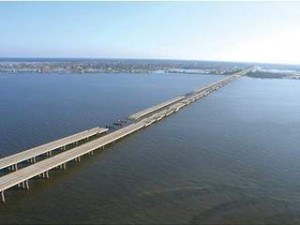 On August 29, 2005, Hurricane Katrina came screaming into southeast Louisiana. It quickly set its sights on a large lake that many people in the rest of the United States probably didn’t even know existed, and those who did know, gave little thought to it. Nevertheless, Lake Pontchartrain was about to make national headlines, where it would remain for months to come. Hurricane Katrina and Lake Pontchartrain were about to make history. Together they were set to cause the music in the party town of New Orleans to stop. And it would be a long time before the people of New Orleans would feel much like singing. Nevertheless, the city of New Orleans would return to its former self again.
On August 29, 2005, Hurricane Katrina came screaming into southeast Louisiana. It quickly set its sights on a large lake that many people in the rest of the United States probably didn’t even know existed, and those who did know, gave little thought to it. Nevertheless, Lake Pontchartrain was about to make national headlines, where it would remain for months to come. Hurricane Katrina and Lake Pontchartrain were about to make history. Together they were set to cause the music in the party town of New Orleans to stop. And it would be a long time before the people of New Orleans would feel much like singing. Nevertheless, the city of New Orleans would return to its former self again.
Bob and I were among those people who had really never heard of Lake Pontchartrain, and like us, if you didn’t know much about Lake Pontchartrain, you didn’t really understand the magnitude of the weakened levees. Hurricane Katrina brought heavy rain to Louisiana. Eight to ten inches fell on the eastern part of the state. In the area around Slidell even more rain fell. The highest rainfall recorded in the state was 15 inches. As a result of the rainfall and storm surge the level of Lake Pontchartrain rose and caused significant flooding along its northeastern shore, affecting communities from Slidell to Mandeville. Several bridges were damaged or destroyed, including the I-10 Twin Span Bridge connecting Slidell to New Orleans. Almost 900,000 people in Louisiana lost power as a result of Hurricane Katrina. In the end, at least 1,245 people died in the hurricane and subsequent floods, making it the deadliest United States hurricane since the 1928 Okeechobee hurricane.
Bob and I traveled to New Orleans in April of 2012. So many changes took place between August of 2005 and April of 2012. Nevertheless, I wasn’t sure how I felt about driving across that causeway that spanned Lake Pontchartrain. Yes, it had escaped damage in Hurricane Katrina, but it still crossed the widest part of a very large lake, and since I knew that the lake’s surges had the ability to severely damage it and the surrounding area…well, I just didn’t know how I would feel about the 23.83 mile drive across…not until we started across the bridge that is. It was an amazing bridge, and an amazing ride across it. The lake was serene, and I found myself hard pressed to picture the lake surging in the fury of a hurricane. I found it hard to picture the water so wild that it could damage a bridge, but it had happened…not to this bridge, but to others. The causeway bridge had been in use from it’s opening on August 30, 1956. At the time we were there, I had no idea of the length of the history of the Causeway. The idea of a bridge spanning Lake Pontchartrain dates back to the early 19th century and Bernard de Marigny, the founder of Mandeville. He started a ferry service that continued to operate into the mid-1930s.
After the 30s, and prior to the Causeway being built, people who lived in Covington and worked in New Orleans, had a very long commute to work. The bridge, while still 23.83 miles across the lake, took a large portion of that commute away. It was truly a great asset to the cities on both sides of the lake. Since 1969, the Causeway was listed by Guinness World Records as the longest bridge over water in the world. In 2011, when 
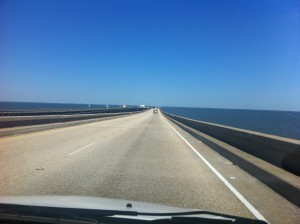 the allegedly longer Jiaozhou Bay Bridge in China was built, Guinness created two categories for bridges over water…continuous and aggregate lengths over water. Lake Pontchartrain Causeway became the longest bridge over water (continuous), while Jiaozhou Bay Bridge the longest bridge over water (aggregate)…because of its sections that are over land. Even if the bridge does get replaced as the longest bridge, it will nevertheless, remain a very long bridge. And the drive over the bridge was as awe inspiring as it could be.
the allegedly longer Jiaozhou Bay Bridge in China was built, Guinness created two categories for bridges over water…continuous and aggregate lengths over water. Lake Pontchartrain Causeway became the longest bridge over water (continuous), while Jiaozhou Bay Bridge the longest bridge over water (aggregate)…because of its sections that are over land. Even if the bridge does get replaced as the longest bridge, it will nevertheless, remain a very long bridge. And the drive over the bridge was as awe inspiring as it could be.
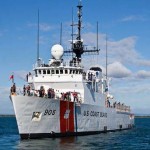
 The USCGC Spencer (WMEC-905) is a U S Coast Guard medium endurance cutter. It was named after my 5th cousin 5 times removed, John Canfield Spencer. He was born January 8, 1788 in Hudson, New York, and died May 18, 1855 in Albany, New York. During the War of 1812, he served in the U S Army where he was appointed the brigade judge advocate general for the northern frontier. John was the 17th Secretary of War from October 12, 1841 to March 4, 1843 and the 16th Secretary of the Treasurer from March 8, 1843 to May 2, 1844, under President John Tyler. As one of few northerners in an administration dominated by southern interests, John found it was becoming increasingly difficult to serve in his cabinet post, so he resigned as Treasury Secretary in May of 1844.
The USCGC Spencer (WMEC-905) is a U S Coast Guard medium endurance cutter. It was named after my 5th cousin 5 times removed, John Canfield Spencer. He was born January 8, 1788 in Hudson, New York, and died May 18, 1855 in Albany, New York. During the War of 1812, he served in the U S Army where he was appointed the brigade judge advocate general for the northern frontier. John was the 17th Secretary of War from October 12, 1841 to March 4, 1843 and the 16th Secretary of the Treasurer from March 8, 1843 to May 2, 1844, under President John Tyler. As one of few northerners in an administration dominated by southern interests, John found it was becoming increasingly difficult to serve in his cabinet post, so he resigned as Treasury Secretary in May of 1844.
WMEC-905 is the third cutter to serve the United States bearing the name “Spencer”. The history of Spencer started in 1843 when the original Spencer was commissioned to serve in the Revenue Cutter Service. An Iron hulled steamer, she served as a lightship off Hampton Roads, Virginia until 1848. The second cutter to carry the name Spencer was hull number W-36, commissioned in 1937. At a length of 327 feet, she first started service as a search and rescue unit patrolling Alaska’s fishing grounds. After the United States entered WWII, the Coast Guard temporarily became part of the US Navy. Spencer saw significant combat action in both the Atlantic and Pacific theaters. In the “Battle of the Atlantic”, Spencer acted as a convoy escort and hunted German submarines, sinking the U-225 and the U-175 in 1944. In late 1944, Spencer reported to the Navy’s Seventh (Pacific) Fleet as a Communications Command Ship. There she was credited with taking part in numerous amphibious invasions including Luzon and Palawan in the Philippines.
After the war, Spencer returned to her Coast Guard duties serving at an Atlantic Ocean Station. Here she provided navigational assistance for the fledgling trans-Atlantic air industry and more importantly, acted as a search and rescue platform for both airplanes and ships. In January 1969, Spencer returned to combat duty off the Coast of Vietnam. For ten months, she provided surveillance to prevent troops and supplies from getting into South Vietnam. In November 1969, Spencer returned to the United States to continue her peace time mission of ocean station keeping. The second Spencer served the nation for more then 37 years and when decommissioned in 1974, she was the most decorated cutter in the Coast Guard’s fleet.
The Spencer of today was commissioned into service on 28th of June 1986. She is credited for confiscating over 46,000 pounds of marijuana and 8800 pounds of cocaine. In 1991 she towed a disabled U.S. Navy frigate, twice her size, to safety, and participated in the search for a missing Air National Guard paratrooper during the “Perfect Storm”. In early 1996, she responded to the Alas Nacionales plane crash off the coastal waters of the Dominican 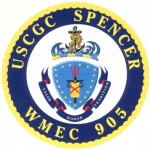
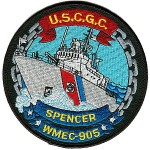 Republic in which 189 people were killed. When the fishing vessel Lady of Grace became disabled during a severe storm in November 1997, Spencer was there to save the crew and tow the vessel to safety. In 1999, Spencer was the on-scene commander for the crash of Egypt Air Flight 990 off Nantucket, controlling both U S Navy and Coast Guard assets in search and recovery efforts. In 2005, Spencer was an initial responder during Hurricane Katrina.
Republic in which 189 people were killed. When the fishing vessel Lady of Grace became disabled during a severe storm in November 1997, Spencer was there to save the crew and tow the vessel to safety. In 1999, Spencer was the on-scene commander for the crash of Egypt Air Flight 990 off Nantucket, controlling both U S Navy and Coast Guard assets in search and recovery efforts. In 2005, Spencer was an initial responder during Hurricane Katrina.
I would like to thank TxHwy105 and Len Eagleburger on Ancestry.com for providing the Spencer historical information and the US Coast Guard site for photos of the Spencer.

